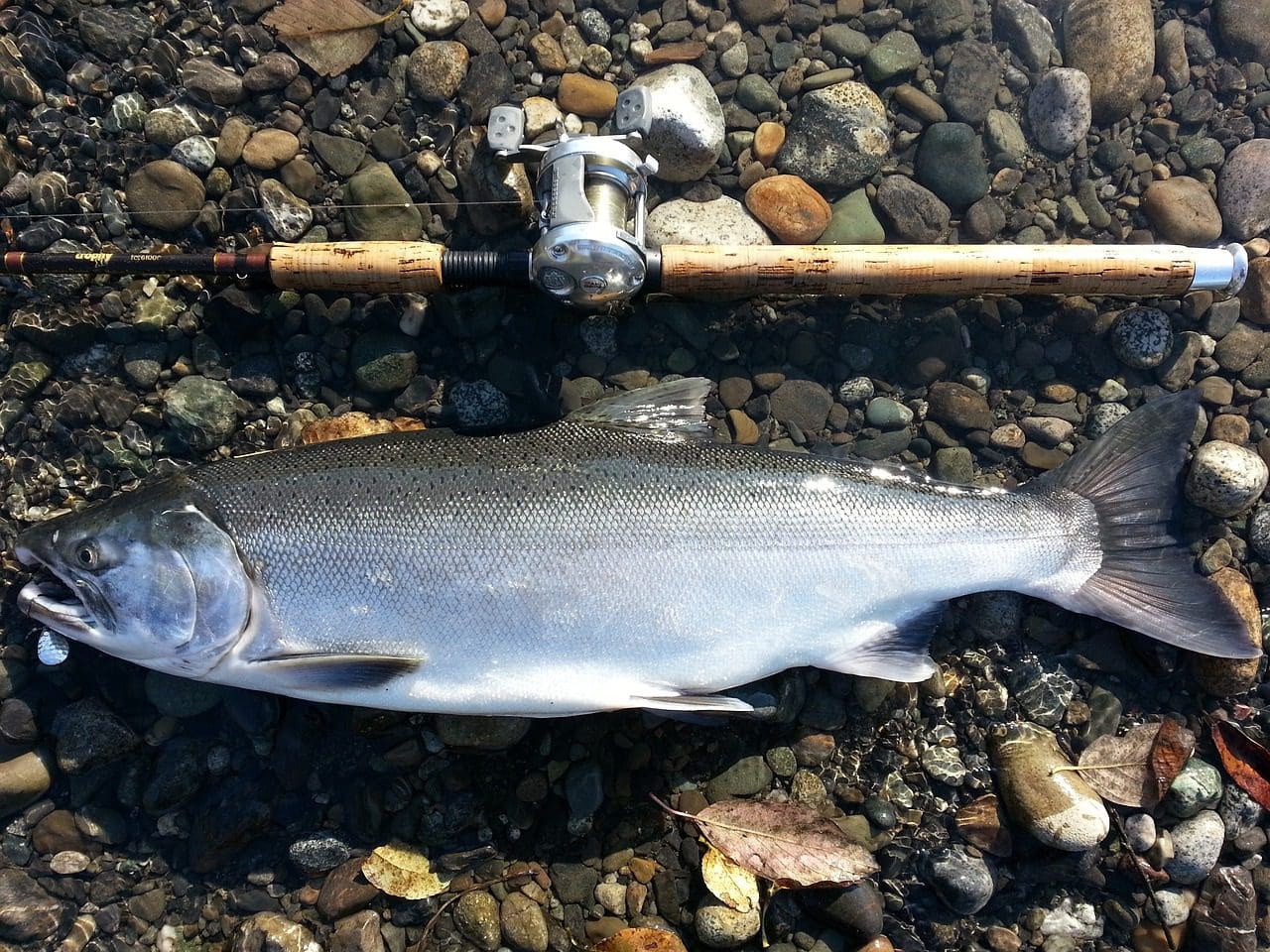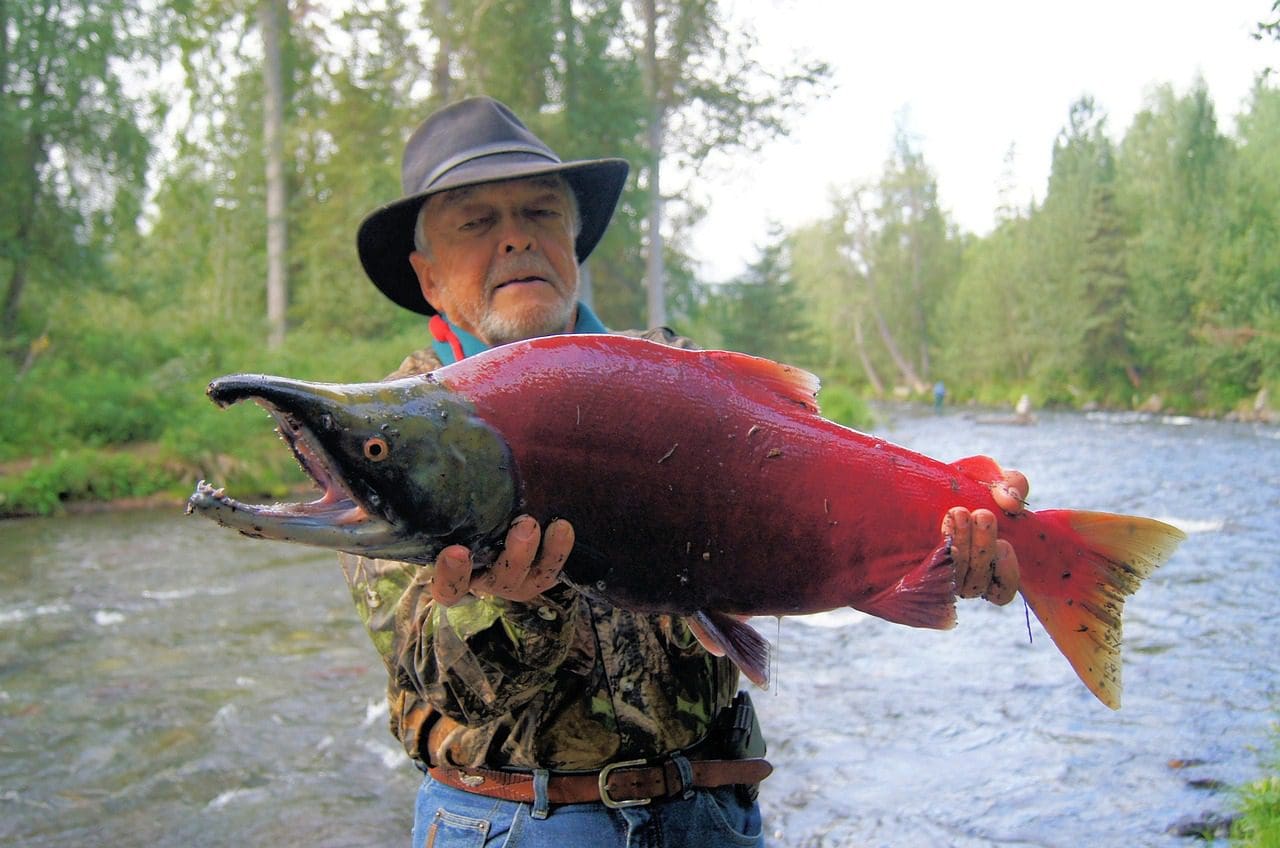People are getting more and more aware of their fitness. Seafood has become one of the extensively consumed foods. It is enriched in necessary fatty acids and also provides calcium and additional nutrients.
Salmons are certain types of fish that are a significant part of the population’s diets; these are both found in the Alaskan province. They furnish us with a vast range of health advantages and are regarded as a rich source of amino acids.
The significant distinction between these two different species of Salmon lies in the parameters that the coho salmon are primarily silver and ebony. However, the sockeye salmon is red in hue.
Key Takeaways
- Coho salmon are larger, with silvery sides and a darker blue-black top, whereas sockeye salmon have a brighter red body and green head during the spawning season.
- Sockeye salmon have a stronger, more distinctive flavor and firmer texture than coho salmon, making sockeye more sought after for culinary purposes.
- Coho salmon have a more extended and less predictable migration pattern, while sockeye salmon follow a more specific route to their spawning grounds.
Coho Salmon vs Sockeye Salmon
Sockeye Salmon, known as red salmon, earned its name due to its vibrant and saturated red colour, while Coho Salmon is called Silver Salmon due to its silvery skin. Sockeye salmon has a strong and more distinct flavour compared to the Coho Salmon. Coho has more minerals and omega-3 fatty acids.

A coho Salmon is mostly a type of species that migrates from saltwater which is found in seas, to freshwater. Their sides are bright silver, and also their fin region (back part) is dark in color.
Their color changes to red and blue when they migrate to new aquatic bodies.
The males and females can be differentiated as the male has the back part slightly curved compared to the female. They are primarily seventy-one centimetres in length and can weigh up to three to five kilograms.
A sockeye Salmon is a more prominent species of Salmon. They, too, are migratory species. To meet their nutritional ends, they feed on tiny organisms called zooplankton. They are mostly red.
Their weight can range from three to seven kilograms. Their name is derived from the term- redfish. They have a large number of gill cartilage and also no presence of any pattern in the back part.
Comparison Table
| Parameters Of Comparison | Coho Salmon | Sockeye Salmon |
|---|---|---|
| Color | It is silver and black. | It is red. |
| Length | Its length is mostly 71 centimeters. | Its length is 84 centimeters generally. |
| Insides | Its meat is light pink. | Its meat is mostly red. |
| Fatty acids | It has a mild amount of fatty acids. | It is high in fatty acids. |
| Oils present | The amount of oil in this is low. | It is very oily. |
What is Coho Salmon?
Coho Salmon is one of the most commonly found species of salmon. They are migrating fish that belong to the family ‘Salmon.’ They are primarily silver on the side. Their back part is red. They are found in abundance in the Alaskan region.
When they migrate, they change their shade. The male member has their back in an arched position as compared to the females. Their streamlined body and fins help them in locomotion and migration.
They belong to the kingdom of Animalia. When the fish enter the city, a rosy color sweeps into its belly region. When cut, the meat of this fish is primarily light pinkish. The size of these fish ranges from sixty-nine to seventy-one centimetres.
They weigh somewhere in between three to five kilograms. If their life span is taken into consideration, it’s long. They lay their eggs once, and then they mostly end their lifespan.
Their eggs mostly hatch during the times of the late winter season. Also, the early spring season might be a good time for them to hatch.
If assessed as a diet, their flavour is modest, along with a mild smell. When they turn into adults, their teeth configuration becomes powerful along with their jaws.
They are less oily, as opposed to other species of salmon. Certain tribal societies also use this fish as a swap. However, they have seen a drastic decline in population because of people hunting them and pollution factors.

What is Sockeye Salmon?
It is another commonly found species of Salmon. It is located in the northern part of the Pacific region and in rivers that emerge from it. They are mostly red. Because of their color, some people also call them redfish.
Their length is eighty-four centimetres in maximum and sixty-four centimetres in minimum. Their range of weight is from two kilograms to seven kilograms.
They are primarily of two types – migratory and non-migratory. Some species migrate to the ocean, whereas some stay in freshwater bodies for the whole of their lifespan.
These are also found in the Columbia River and the northern region of the Japanese islands. This fish is a staple diet in those regions. Some of the fish are found in landlocked places.
It means they cannot move to the ocean. They are more selective in their diet. They live in groups to stay protected. Their meat is dark red.
Also, their bodies contain a much higher amount of oils. The amount of fatty acids in them is also very high. These traits give them a rather bold smell and flavour. It is very nutritious.
For reproduction purposes, the males of these species look for bigger and stronger females. The alpha or stronger males of these species behave rather aggressively.
In the United States, these have become an endangered species. At several phases of their life, they change their color.

Main Differences Between Coho Salmon and Sockeye Salmon
- The coho salmon is mostly silver and black. However, the sockeye Salmon are red.
- The length of coho salmon ranges from seventy-one centimetres. The sockeye Salmon mainly reaches about eighty-four centimetres in length. It may be longer in some cases.
- The meat of the coho salmon is light pink, whereas the heart of the sockeye salmon is red.
- The coho salmon contains a mild amount of omega-three fatty acids. The amount of omega-three fatty acids in sockeye salmon is much higher.
- Coho salmon contains a mild amount of oil. A sockeye salmon, however, is a very oily kind of fish.




